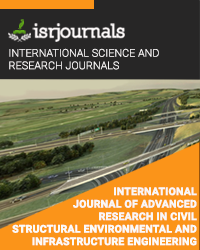energy recovery of municipal solid waste by thermal process
M.Deexith Vishnu Yadav,S.Ashok kumar
Published in International Journal of Advanced Research in Civil,Structural,Environmental and Infrastructure Engineering and Developing
ISSN: 2320-723X Impact Factor:1.7 Volume:3 Issue:1 Year: 11 March,2017 Pages:417-422

Abstract
Success of solid waste management system is directly related to disposal efficiency. It is decided upon how much of the total dumped waste is finally disposed properly. It is clear that we are not disposing municipal solid waste as per internationally accepted scientific procedures and there is no state level solid waste management policy. Studies show that the most beneficial of disposal is Advanced Thermal Treatment method (thermo select gasification). Hydrogen from Syn gas is required in market and methane gas is used to produce electricity and also used for vehicle fuel, in further use of methane as chemical solvent, paint. The main product is Syn gas (CH4, CO, H). The Syn gas emission separation process can be done by gas analysis process
Kewords
Advanced Thermal Treatment Process, Gasification, Solid waste management
Reference
[1] Advanced Plasma Power 2007 “Gas plasma Outputs – clean syngas: the effects of plasma treatment on the reduction of organic species in the syn-gas” [2] Ahmed I, Gupta AK. 2009, Characteristics of cardboard and paper gasification with CO2. Appl Energy, 86(12):2626–34. [3] Anna P, Yang W, Lucas C. 2006, Development of a thermally homogeneous gasifier system using high-temperature agents. Clean Air, 7(4):363– 79. [4] Anh NP, Changkook R, Vida NS, Jim S. 2008, Characterisation of slow pyrolysis products from segregated wastes for energy production. J Anal Appl Pyrol, 81(1):65–71. [5] Anthony D, Sylvie V, Pierre C, Sebastien T, Guillaume B, Andre Z, et al. 2009, Mechanisms and kinetics of methane thermal conversion in a syngas. Ind Eng Chem Res, 48(14):6564–72. [6] Blasiak W, Szewczyk D, Lucas C. 2002, Reforming of biomass wastes into fuel gas with high temperature air and steam. In Pyrolysis & Gasification of Biomass & Waste. Strasbourg, France. 81(3):291–7. [7] Boroson ML, Howard JB, Longwell JP, Peters WA. 1989, Product yield and kinetics from the vapour phase cracking of wood pyrolysis tars. AIChE J, 35(1):120–8. [8] Colomba DB. 2004, Modeling wood gasification in a counter current fixed-bed reactor. AIChE J, 50(9):2306–19. [9] Consonni, S., Giugliano, M., Grosso, M., 2005. Alternative strategies for energy recovery from municipal solid waste. Part A: Mass and energy balances. Waste Management 25, 123–135. [10] Ecke H, Sakanakura H, Matsuto T, Tanaka N, Lagerkvist A. 2000, State-of-the-art treatment processes for municipal solid waste incineration residues in Japan. Waste Manage Res;18(1):41–51. [12] Grace, J., 1986. Contacting modes and behaviour classification of gas-solid and other two-phase suspensions. Canadian Journal of Chemical Engineering 64, 353–363. [13] Grimshaw A.J. and Lago A. 2010. Small Scale Energies Gasification Technology. 3rd Int. Symposium on Energy from Biomass and Waste, Venice, Italy, 8–11 November, 2010. CISA Publisher, Italy-ISBN 978-88-6265-008-3. [14 Harada 2003. Mitsui Recycling 21–Pyrolysis Gasification and Melting Process – Toyohashi R21 Plant. IEA presentation. Hefa C, Yuanan H. 2010, Municipal solid waste (MSW) as a renewable source of energy: current and future practices in China. Bioresour Technol 101(11):3816–24

